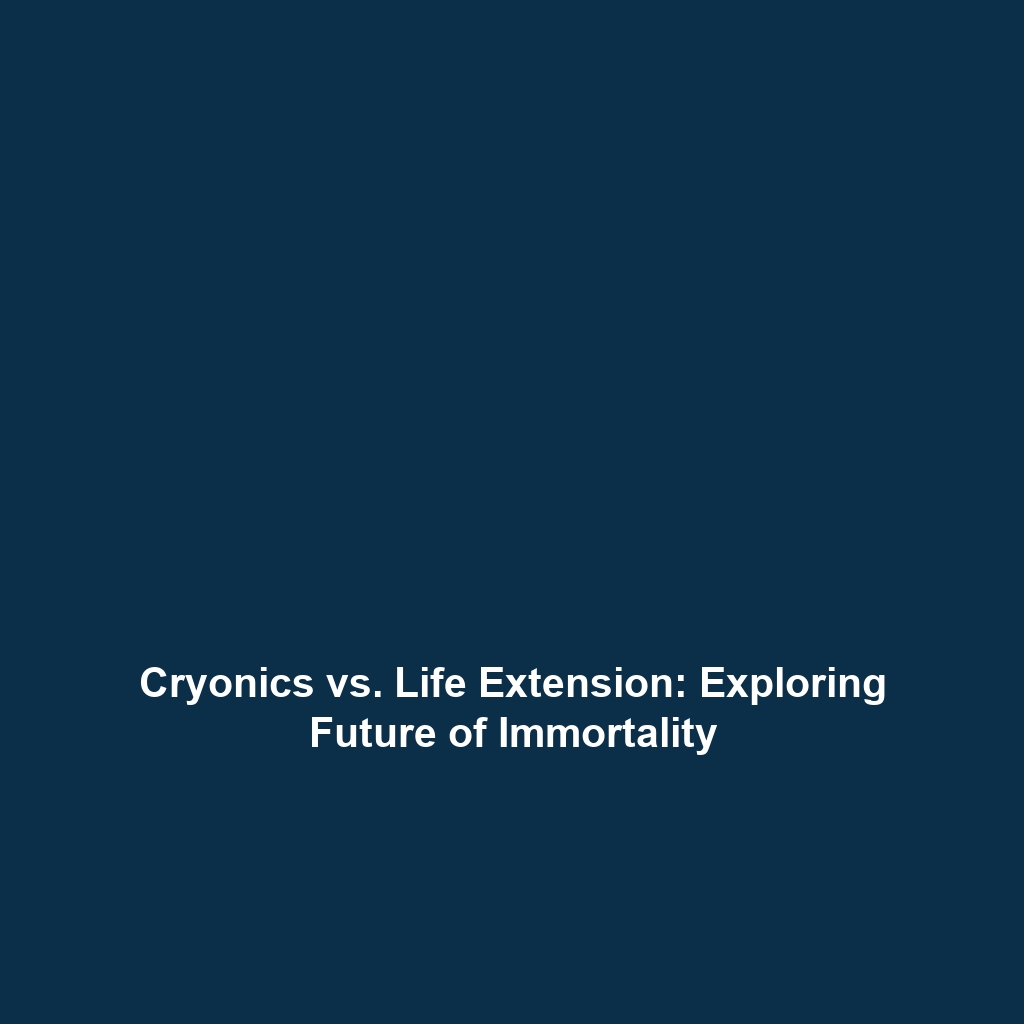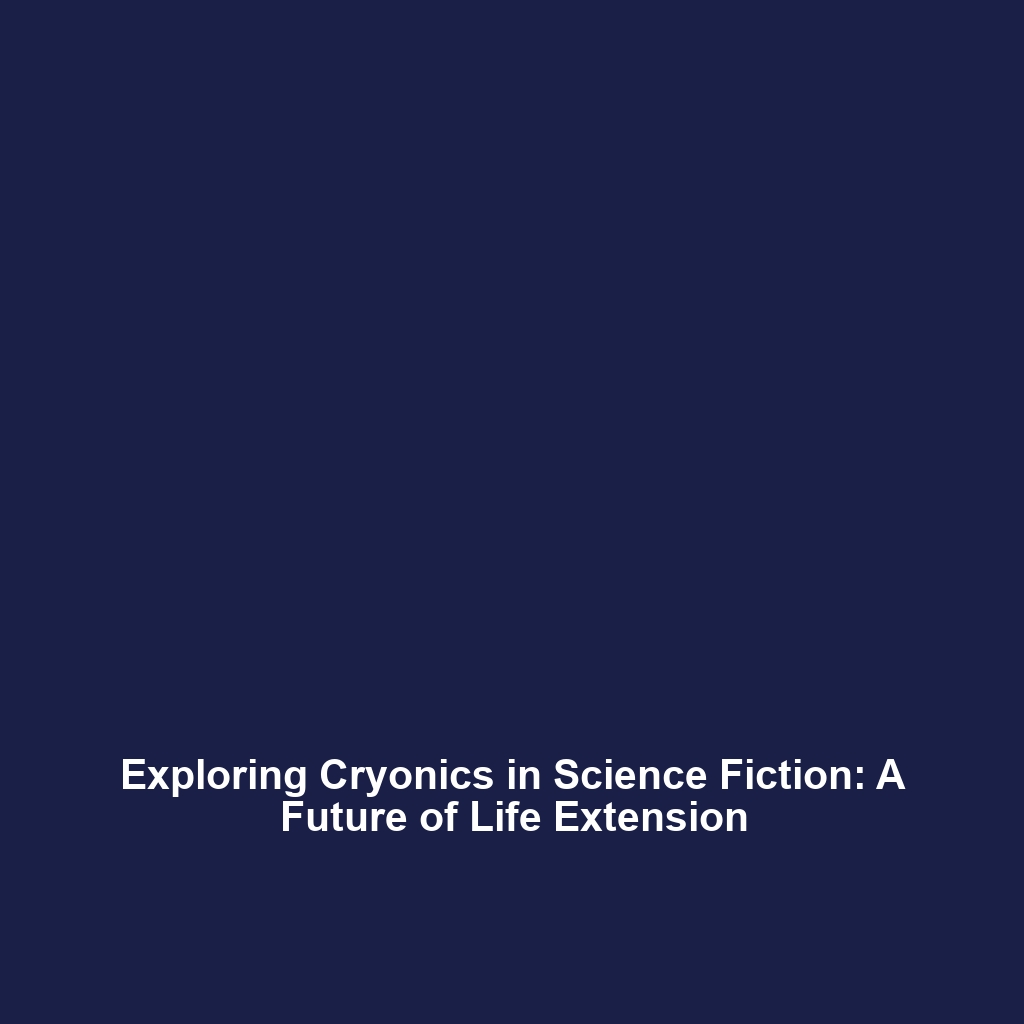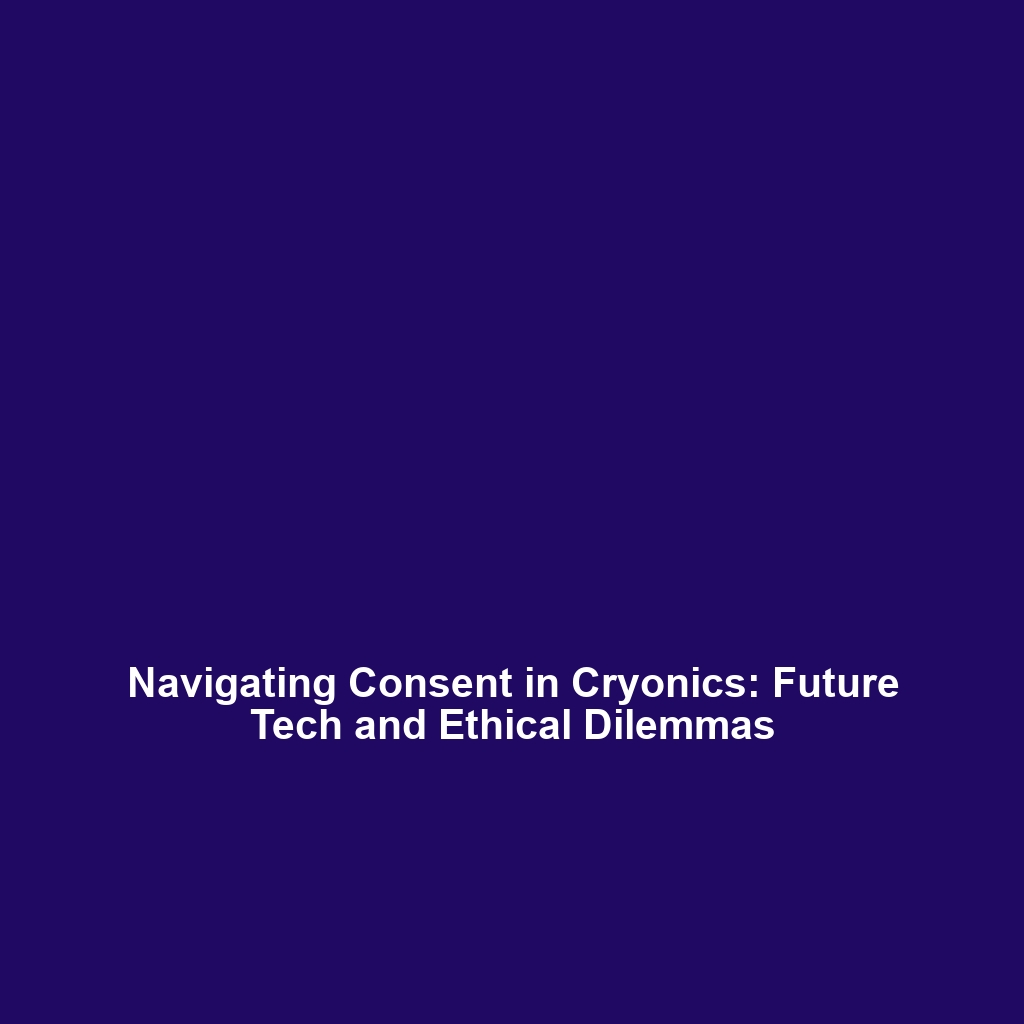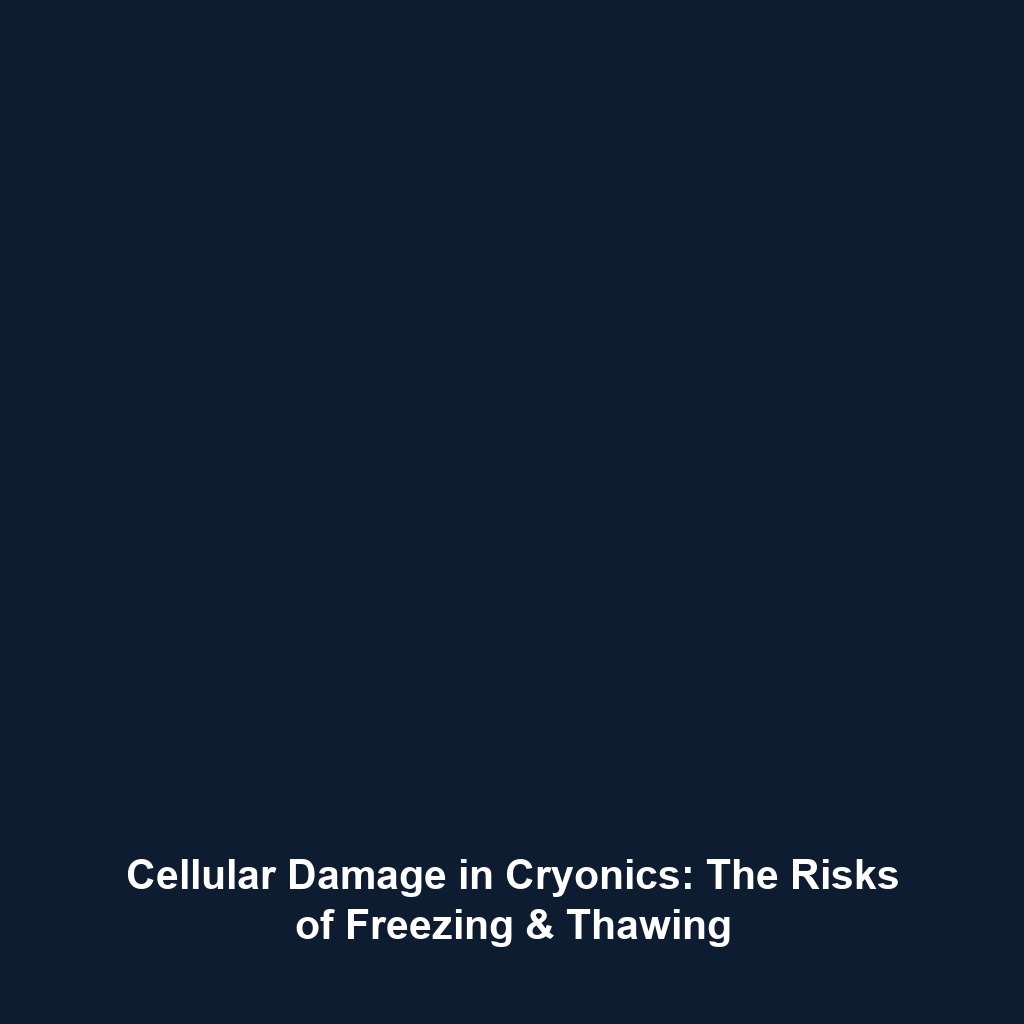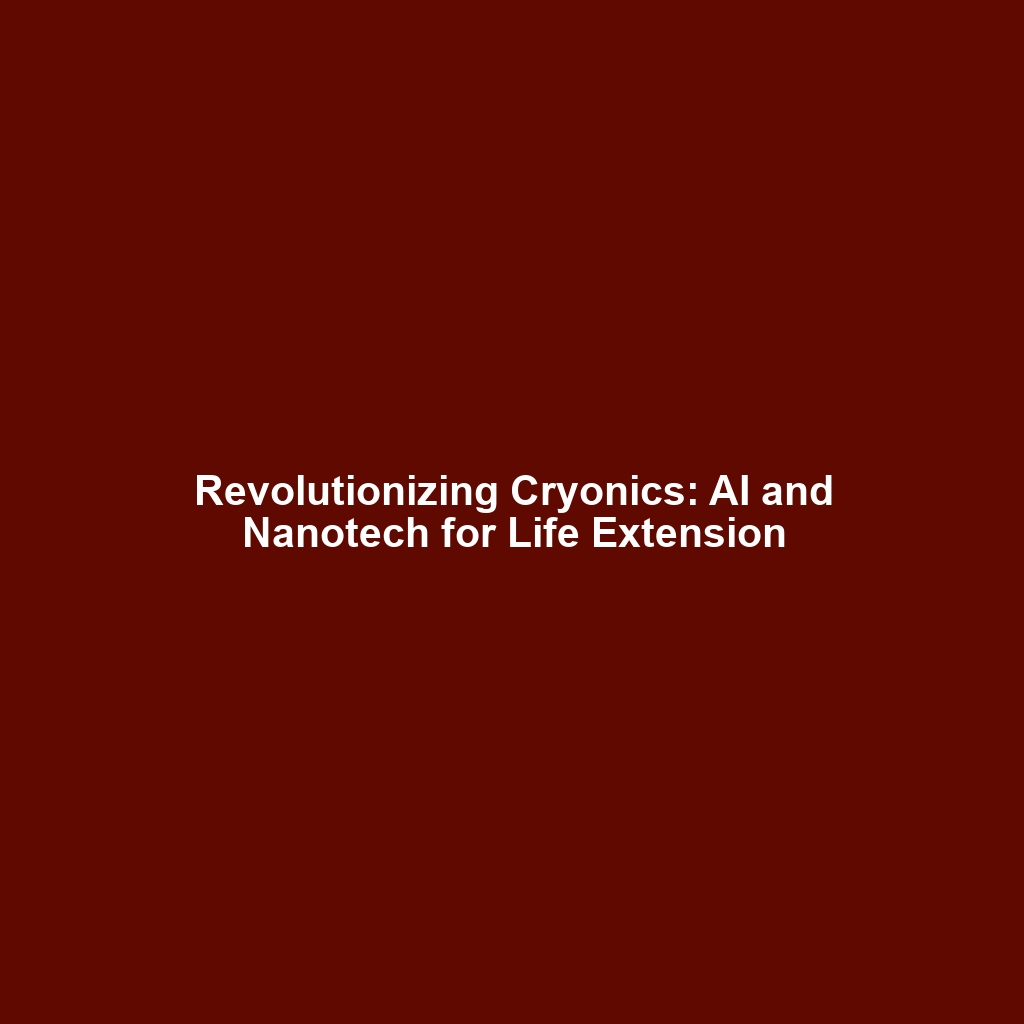Cryopreservation: The Key to Cryonics and Life Extension
Cryopreservation is a revolutionary technique that involves cooling and storing cells, tissues, or whole organs at very low temperatures to stop cellular metabolism and preserve biological structures. As a critical component of Cryonics and Life Extension, this method holds the potential to change how we approach aging and death, making it a significant area of research. Understanding the intricacies of cryopreservation not only enhances our knowledge of cellular biology but also paves the way for future breakthroughs in maintaining human life and enhancing longevity.
Key Concepts of Cryopreservation
Cryopreservation is grounded in several key concepts that are essential for its functionality:
- Cooling Rates: The speed at which the biological materials are cooled can significantly impact their structural integrity.
- Vitrification: This process involves turning a substance into a glass-like state to prevent ice crystal formation that can damage cells.
- Cryoprotectants: Chemicals such as dimethyl sulfoxide (DMSO) and glycerol are used to protect cells from ice formation and toxic effects during the freezing process.
These principles are integral to the practices in Cryonics, enabling the long-term storage of preserved biological materials for potential future revival and life extension.
Applications and Real-World Uses
The applications of cryopreservation extend across various fields, notably in medical and reproductive technologies:
- Sperm and Egg Freezing: Used widely in fertility treatments and preservation of genetic material.
- Tissue Preservation: Essential for organ transplants, allowing for organs to be preserved for future transplantation.
- Cell Storage for Research: Stem cell lines and other cell types can be preserved for long-term experiments and clinical trials.
Understanding how cryopreservation is used in cryonics and life extension enhances our capability to apply these technologies to prolong human life and health.
Current Challenges of Cryopreservation
Despite its promise, there are several challenges in the application of cryopreservation that researchers face:
- Ice Crystal Formation: Even with cryoprotectants, ice crystals can still form and cause cellular damage.
- Optimal Cryoprotectant Concentration: Finding the right balance is critical to minimize toxicity while preserving cellular integrity.
- Standardization: There is a lack of uniform protocols in cryopreservation practices, which can lead to inconsistent results.
Addressing these issues in cryonics and life extension is crucial for the advancement of these technologies and their acceptance in mainstream medicine.
Future Research and Innovations
The future of cryopreservation looks promising, with ongoing research and innovations aimed at overcoming current limitations:
- Improved Cryoprotectants: Development of new, less toxic cryoprotectants can enhance cell viability post-thawing.
- Advancements in Vitrification Techniques: Research into faster and more effective vitrification methods could minimize cellular damage.
- Automation and Robotics: Use of robotic systems to achieve precise cooling and storage can boost consistency and safety in cryopreservation.
These innovations are critical for paving the way to a future where cryonics and life extension become viable options for humanity.
Conclusion
In summary, cryopreservation stands at the forefront of cryonics and life extension, offering profound implications for the future of human longevity. With ongoing advancements, potential solutions to current challenges, and innovative applications, cryopreservation may one day lead to unprecedented breakthroughs in the preservation and revival of life. For more information on related topics, explore our articles on cryonics and life extension techniques.

